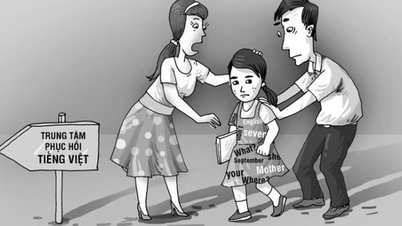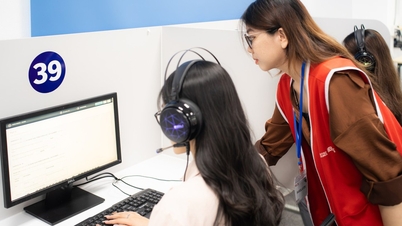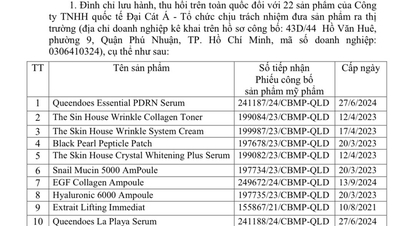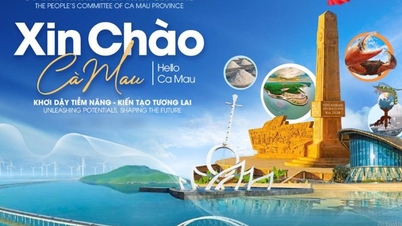The Minister of Science and Technology has just issued Circular No. 27 regulating scientific articles and evaluation and classification of Vietnamese scientific journals, effective from December 15.
This Circular applies to organizations and individuals performing activities of selecting scientific articles, publishing, evaluating and classifying scientific journals and other relevant organizations and individuals in Vietnam.
6 criteria for evaluating scientific journals
According to the circular, the principle of selecting scientific articles for publication in the journal is that the content of the article must ensure academic quality, legality and be checked by plagiarism checking tools. At the same time, it must comply with regulations on scientific integrity and professional ethics as prescribed in Decree No. 262 (October 2025) of the Government detailing and guiding the implementation of a number of articles of the Law on Science, Technology and Innovation on information, statistics, assessment, digital transformation and general issues.

Research results published in ranked scientific journals will help scientists increase their reputation.
PHOTO: DAO NGOC THACH
Evaluation and classification of scientific journals will be carried out periodically every year or suddenly at the request of state management agencies.
Accordingly, the evaluation of scientific journals is based on 6 criteria with a total score of 100 points.
First , academic content criteria (25 points): Over 75% are academic research articles, scientific overview articles, academic discussion/reflection articles: 15 points.
Use the international standard APA, IEEE, Chicago, Vancouver citation and reference list system: 5 points. Have the title, abstract, and keywords of the scientific article in English: 5 points.
Second , criteria for the Editorial Board (15 points): At least 50% of the members of the Editorial Board are independent experts outside the journal's governing body: 5 points. The Editorial Board has appropriate professional qualifications and public members: 7 points. Members are international experts with appropriate expertise: 3 points.
Third , criteria for the article review process (20 points): There is a transparent process of receiving, reviewing, deciding, and editing, publicly announced on the journal website: 8 points.
Publicly disclose on the journal's website the contents related to the collection or non-collection of fees for the process of receiving, processing, editing, and publishing articles: 2 points. Applying closed review, with at least 2 independent reviewers for each article: 10 points.
Fourth , criteria on publishing standards (10 points): Correctly implement the registered publishing frequency, have a valid ISSN code; have regulations on scientific publishing standards according to international practice: 5 points.
Have a public policy on detecting plagiarism, retracting articles, handling conflicts of interest and publishing copyright; do not accept articles that violate copyright, fraud, fake data, or misleading citations: 5 points.
5th , criteria on transparency and accessibility (10 points): Having a journal website with full information (principles, list of Editorial Board, review policy, submission regulations, author instructions): 5 points. Posting full-text articles, with abstracts, keywords, DOI codes (if any): 5 points;
Finally, the indexing criteria (20 points): The scientific journal must be indexed on the national information system on science, technology and innovation or one of the international scientific databases Scopus/WoS: 20 points.
Journals meet scientific standards when they score above 75 points and meet criteria for academic content, peer review and indexing.
From 2027, the ranking will be published annually.
Classification of scientific journals is carried out for journals in the same specialized field that have been recognized as meeting scientific standards according to the regulations on evaluation criteria above.
Scientific journals are ranked based on their Impact Factor (IF). Accordingly, IF is calculated by dividing the total number of citations in a year by the total number of articles published in the previous 2 years by the total number of articles published in the same 2 years.
The ranking of scientific journals can be based on a number of indicators such as CiteScore (Citation Score - citation score), FWCI (Field-Weighted Citation Impact - citation weight by field).
CiteScore reflects the average number of citations received for each scientific article published in a journal; it is calculated based on the number of citations of a journal's scientific articles over 4 years, divided by the number of scientific articles of the journal published in the same period.
FWCI is the ratio between the actual number of citations a scientific article receives and the expected number of citations of similar scientific articles in the same field, same type and same publication time.
Accordingly, FWCI = 1 shows that the article has an average citation level; FWCI > 1 shows that the citation level is higher than average; FWCI < 1 shows that the citation level is lower than average.
The Ministry of Science and Technology will compile a list of Vietnamese journals that publish scientific articles and organize evaluations according to criteria to issue a list of journals that meet Vietnamese scientific standards before April 30 every year.
At the same time, this ministry also classifies journals in the List of journals meeting Vietnamese scientific standards according to the above regulations and announces the classification results before April 30 every year from 2027.
600 journals but less than 15 journals are listed in Scopus and WoS
According to the State Council of Professors, Vietnam currently has more than 600 scientific journals. Most ministries, branches, universities, research institutes, etc. have their own scientific journals. Of these, 32 are affiliated with universities managed by the Ministry of Education and Training, not including member schools of regional universities.
However, currently the number of Vietnamese journals in Scopus and WoS is much less than many countries in the region, only less than 15 journals, while Indonesia has 169 journals, Singapore 205 journals, Malaysia 117 journals...
The total number of Vietnamese scientific articles each year is about 40,000, of which over 19,000 are submitted to foreign Scopus/WoS journals.
Source: https://thanhnien.vn/se-co-xep-loai-tap-chi-khoa-hoc-viet-nam-tieu-chi-ra-sao-185251113085422068.htm






![[Photo] Deep sea sand deposits, ancient wooden ship An Bang faces the risk of being buried again](https://vphoto.vietnam.vn/thumb/1200x675/vietnam/resource/IMAGE/2025/11/13/1763033175715_ndo_br_thuyen-1-jpg.webp)



































































![[Photo] Panorama of the 2nd Vietnam-Cambodia Border Defense Friendship Exchange](https://vphoto.vietnam.vn/thumb/402x226/vietnam/resource/IMAGE/2025/11/13/1763033233033_image.jpeg)






















![Dong Nai OCOP transition: [Article 3] Linking tourism with OCOP product consumption](https://vphoto.vietnam.vn/thumb/402x226/vietnam/resource/IMAGE/2025/11/10/1762739199309_1324-2740-7_n-162543_981.jpeg)







Comment (0)